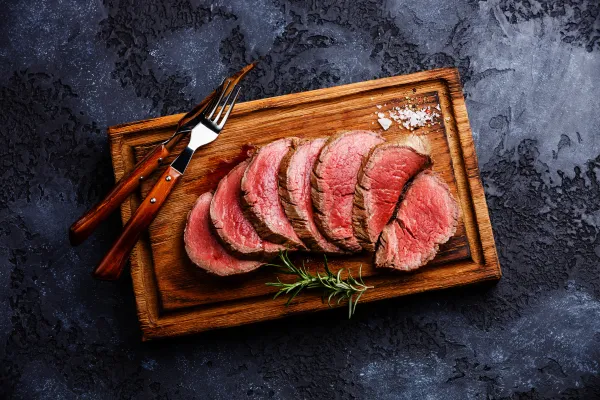
Built-in grills can be a valuable addition to any outdoor living space, providing a convenient and stylish way to cook and entertain guests. However, the decision to install a built-in grill requires careful consideration of factors such as cost, customization, and efficiency.
- Key Takeaways
- Cost and Installation
- Adapting Regular Grills
- Customization and Efficiency
- Frequently Asked Questions
- What are some safety concerns to consider when installing a built-in grill?
- Can a built-in grill be converted to use a different type of fuel, such as propane to natural gas?
- Are there any specific building codes or regulations that need to be followed when installing a built-in grill?
- What are some common features or accessories that can be added to a built-in grill station?
- How often should a built-in grill be professionally cleaned and maintained?
In this article, we will explore the various aspects of built-in grills, providing valuable insights and tips for creating the perfect built-in grill station for your home. Installing a built-in grill requires a significant investment, both in terms of cost and time. However, the benefits of having a customized outdoor cooking space are well worth the effort.
In addition to providing a convenient and efficient way to cook, a built-in grill can also increase the value of your home. By understanding the cost and installation process, you can make an informed decision about whether a built-in grill is right for you.
Key Takeaways
– Built-in grills can be expensive, with prefabricated options ranging from $2,000 to $30,000 and custom options potentially costing up to $50,000 or more.
– Almost any type of grill can be used as a built-in, but specific dimensions and considerations, such as proper ventilation and spacing, must be accounted for.
– Professional installation is recommended, and may involve collecting materials, running utility lines, and adhering to HOA guidelines and permit requirements.
– Customization options include stonework and countertop materials, but efficiency concerns must also be addressed to ensure proper operation.
Cost and Installation
The cost of built-in grills can be quite high, ranging from $3,000 to $50,000 or more. When considering the cost of a built-in grill, it’s important to factor in the cost of installation, which typically requires the services of a professional contractor.
This includes collecting materials, running utility lines, installing hardscaping, purchasing appliances, adding built-ins, setting up lighting, and ensuring compliance with specific guidelines and conditions, such as those set by the Home Owners Association and gas line permit requirements.
While the upfront cost of a built-in grill may be steep, it’s important to consider the long-term benefits. Built-in grills are a permanent fixture in your outdoor living space, and they’re typically made with high-quality materials that are designed to last.
Additionally, built-in grills can increase the value of your home, making them a smart investment in the long run. With the help of a professional contractor, you can design and install a built-in grill that meets your specific needs and budget, ensuring that you get the most value for your money.
Adapting Regular Grills
Adapting a regular grill for use as a built-in requires thorough research and careful consideration of its dimensions. Unlike prefabricated built-in grills, not all built-in grill docks are one size fits all.
Removing the legs of a regular grill to use it as a built-in grill is usually not possible, as it may not operate efficiently inside an enclosure. Building an alcove to custom-fit the grill is the best way to convert it into a built-in. Folding sides should be removed to avoid unattractive gaps.
Specific considerations and conditions, such as spacing, clearance, and ventilation, need to be satisfied to ensure the proper functioning of the built-in grill. It may be possible to use a charcoal grill as a built-in, but model-specific research is necessary.
Charcoal models made for built-in grills are often several times more expensive than regular charcoal grills. The structure should be designed to accommodate the exact dimensions of the grill while allowing proper ventilation. A professional contractor should be hired for installation, and the Home Owners Association (HOA) may have guidelines concerning the grill structure.
Despite the challenges, with proper research, planning, and execution, adapting a regular grill for use as a built-in can be a cost-effective way to achieve the outdoor cooking experience of your dreams.
Customization and Efficiency
When considering the use of a regular grill as a built-in, it is important to evaluate factors such as stonework and countertop materials for optimal customization. The stonework should complement the grill and the surrounding area, while the countertop material should be durable and easy to clean.
Bluestone is generally less expensive than granite and can be a good option for those on a budget. However, granite is a popular choice due to its durability and aesthetic appeal.
Efficiency is also an important factor to consider when using a regular grill as a built-in. Even if the legs are removed, the unit may not operate efficiently inside an enclosure. It is recommended to check the recommended clearance around the built-in grill to ensure proper ventilation.
Additionally, the structure should be designed to accommodate the exact dimensions of the grill while allowing for proper ventilation. Specific considerations and conditions, such as spacing, clearance, and ventilation, need to be satisfied to ensure optimal efficiency and safety.
Frequently Asked Questions
What are some safety concerns to consider when installing a built-in grill?
When installing a built-in grill, safety concerns include proper ventilation, clearance around the grill, and adherence to local building codes. Gas lines may require permits and HOA guidelines should be followed. Hire a professional contractor for installation.
Can a built-in grill be converted to use a different type of fuel, such as propane to natural gas?
As long as the built-in grill has been designed to work with both propane and natural gas, it can be converted. However, it is important to hire a professional to ensure proper installation and avoid damage to the grill or danger to those using it.
Are there any specific building codes or regulations that need to be followed when installing a built-in grill?
Building codes and regulations vary by state and municipality, but common requirements for built-in grills include proper ventilation, clearance from combustible materials, and gas line permits. It is important to check local codes before installation.
What are some common features or accessories that can be added to a built-in grill station?
Common features and accessories for built-in grill stations include side burners, rotisseries, refrigerators, storage cabinets, and outdoor sinks. These additions can enhance the functionality and convenience of the grill station, creating an enjoyable outdoor cooking experience.
How often should a built-in grill be professionally cleaned and maintained?
Built-in grills should be professionally cleaned and maintained at least once a year. This will ensure proper functioning and longevity of the grill. It is important to follow the manufacturer’s instructions and guidelines for maintenance.




